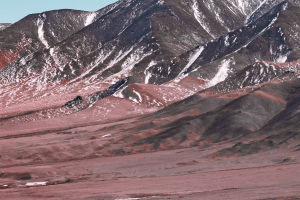The Alps are known as a ski resort, and in winter, skiers come from all over the world.
However, in the summer, the Alps are lush and green after the snow melts. Every June, the Alpine Route, which runs through the Alps, is opened to the public, welcoming visitors from all over the world with an enchanting view.
The Alpine Route, located in southeastern France, is a 684-kilometer-long road that has been named one of the top 10 most scenic roads in the world. Starting from the picturesque shores of Lake Geneva in the north and extending to the Mediterranean Sea in the south, the road passes through 16 mountain passes with the highest elevation of over 2,000 meters.
Whether by bicycle, motorcycle, or car, you can enjoy the spectacular mountain scenery of the Alps, the local culture of the valley, and the food.
In the 18th century, some roads were built to enhance communication between strategic points in the Alps, and in 1909, with the help of the French Touring Club, which promotes bicycle tours, work continued to link these roads to form the Alpine Route.
Since the opening of the road, the locals have continued to develop their cultural and natural heritage, making tourism one of their main industries and generating a good income from tourists.
The road has been receiving tourists for hundreds of years, and in the process of developing from a bicycle path to a motorway, local tourism authorities and travel professionals have developed a variety of itineraries and detailed travel plans.
The entire Alpine Route is divided into 8 sections, which take about a week by bicycle, and the most treacherous part can be experienced at different altitudes within 10 kilometers, making it a classic route favored by many cycling and self-driving enthusiasts.
Lake Geneva, also known as Lake Leman, is the largest of the Alpine lakes and the world's largest alpine weir.
The small French town of Thononleban is located here, which is the northern starting point of the Alpine Route. A short distance south from here, the snowy summit of Mont Blanc, the main peak of the Alps, can be seen in good weather conditions.
On the road are the remains of monasteries built over a thousand years ago, cascading waterfalls, and stone villages preserved in their rustic charm.
There are many highways in the Alps, and the Italian section of the highway is so treacherous that there are often dozens of hairpin turns in a row, making your palms sweat and your heart beat faster.
The Alpine Route belongs to the western section of the Alps and is characterized by its high altitude, of which the Istrian Pass Road is the most famous. This section is the highest road in the Alps and the highest road in mainland Europe, at 2,764 meters above sea level.
The elevation gain is 914 meters over a short 14.5-kilometer stretch. It is the most scenic high point on the entire Alpine Route and has also been a climbing stage of the Tour de France, as well as a finalist for the 14 craziest roads in the world.
At the end of the Alpine Route, the small Mediterranean town of Menton is close to the Franco-Italian border. The Mediterranean Sea in the south of France is at your fingertips, with the small pocket-sized country of Monaco, the southern French resort of Nice, and Cannes all nearby. In the summer, lavender and sunflowers open in abundance, giving a fantastic end to the journey.


